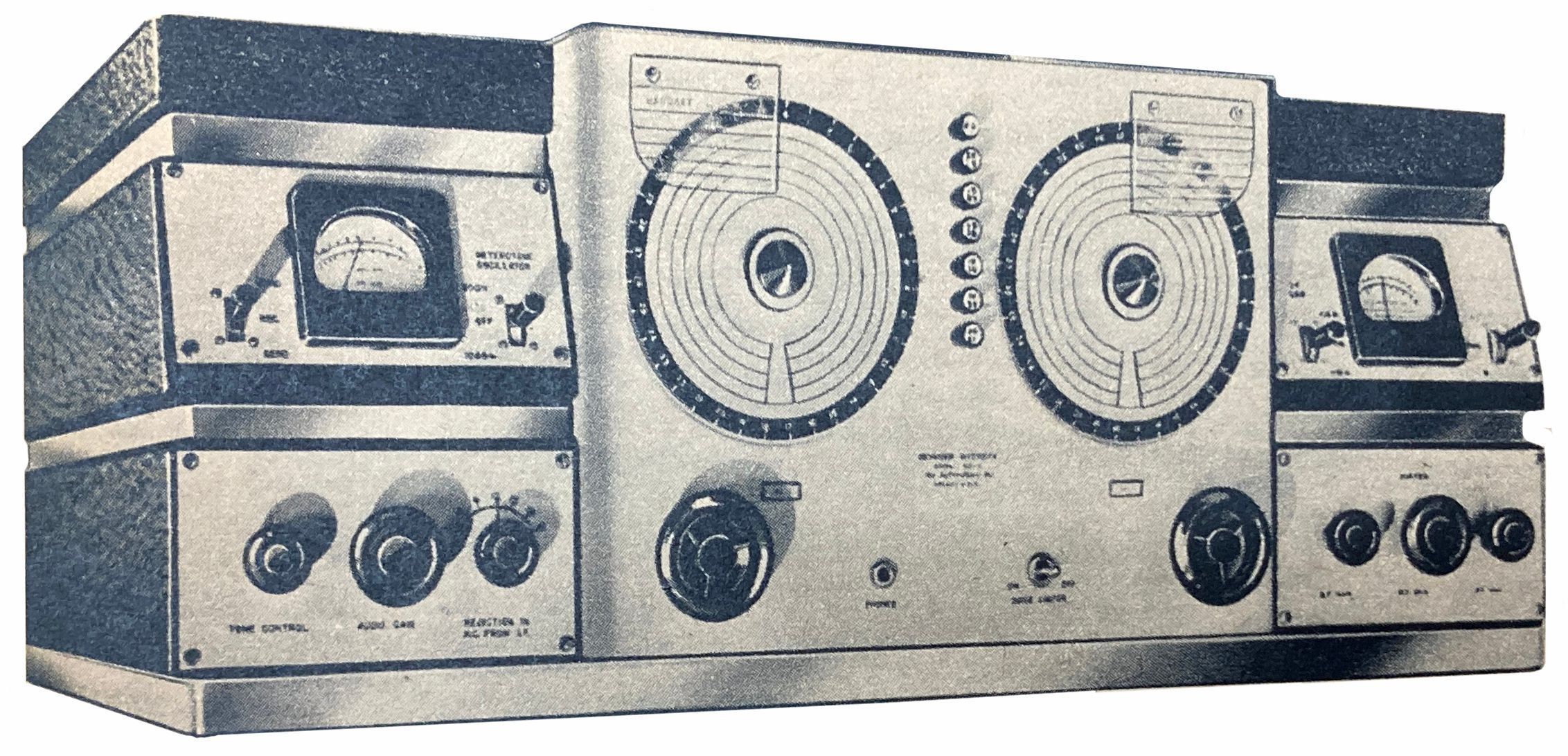Note
QST, Jun 1938, p. 1.
Radio News, Jul 1938, inside front cover.
Lafayette catalog number 73, p. 108.
Lafayette catalog number 78, p. 149.
The DD-1 is perhaps the most arcane product designed by Hallicrafters.The technique of diversity reception uses two separate receivers, each with its own antenna, to compensate for signal fading. The idea is that if the antennas are widely spaced and/or differently oriented, signal fading on one would not occur on the other. This is called space diversity (because of the spacing of the antennas), as opposed to frequency diversity, in which the same intelligence is transmitted on two separate frequencies simultaneously, but with the same goal in mind.
In the DD-1, two completely separate receivers share a common power supply (DD-P) and a common audio system (DD-A).
Two different methods are available for CW reception. The first is a standard BFO, and the second is what the company referred to as "heterotone" oscillator, which kept the received CW note at either 500 or 1000 Hz regardless of tuning adjustments.
The system was made in both table-top and console versions.
The brick-shaped speakers and two small "diversity action" meters are optional. The meters, generally seen on top of the receivers, are connected with a cable and can be placed anywhere the operator feels is most convenient.
Coverage: 545 kHz to 44 MHz
IF: 455 kHz
Average sensitivity: better than 1.0 µV
Tubes (each receiver): (2) 1851, (2) 6L7, (1) 6K7, (4) 6J5, (2) 6H6, (1) 6K6, (1) 6J7
Tubes (power supply): (1) 5Z3
Tubes (audio amp): (1) 5Z3, (2) 2A3, (1) 6J5
References
Review: QST, Dec 1937, p. 17.
